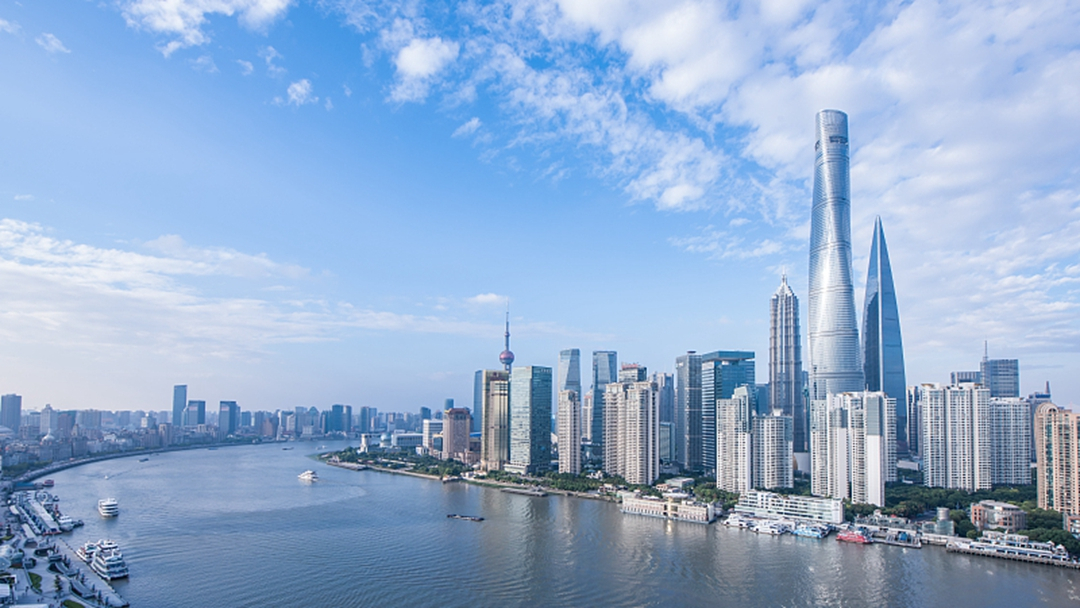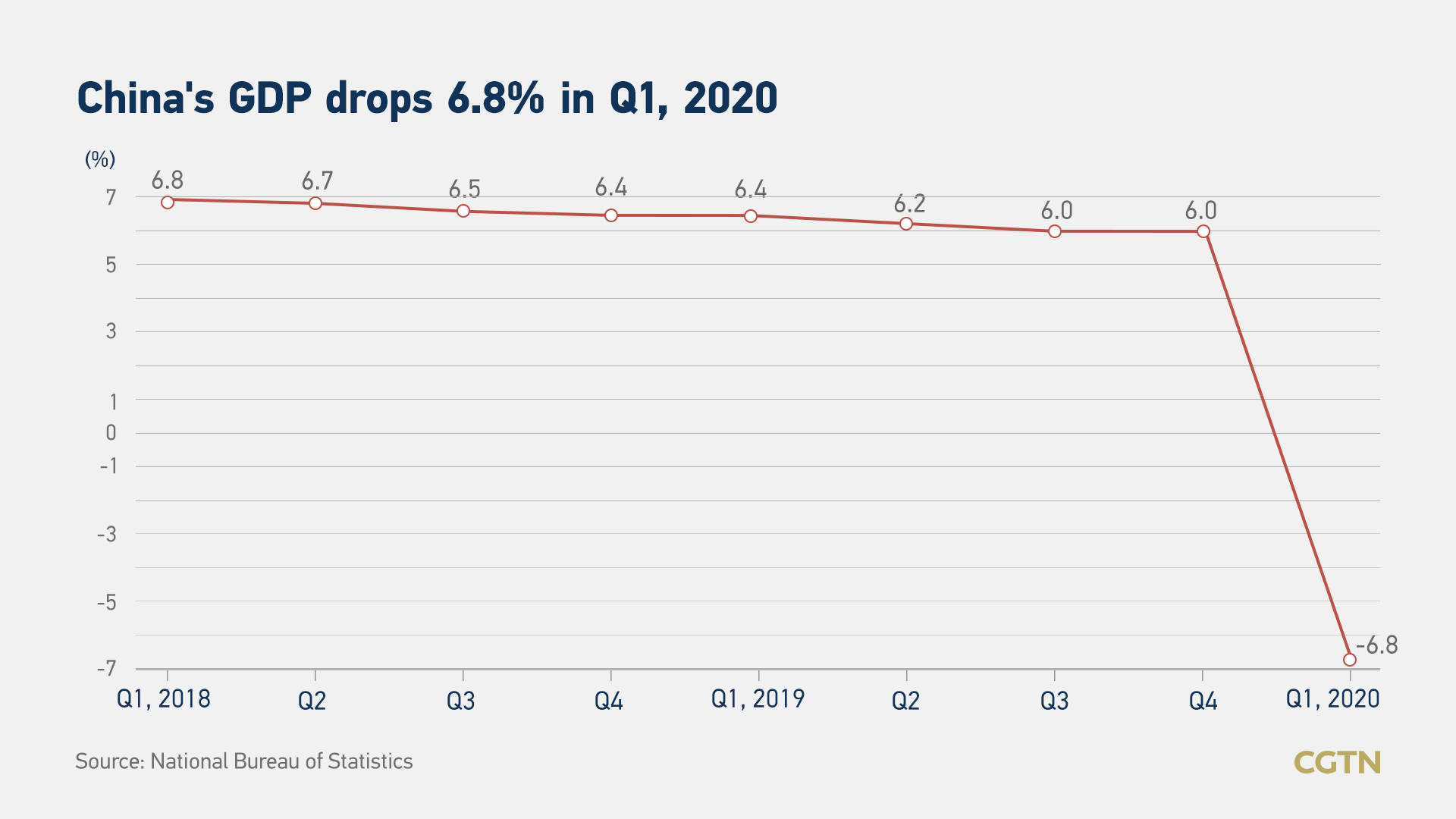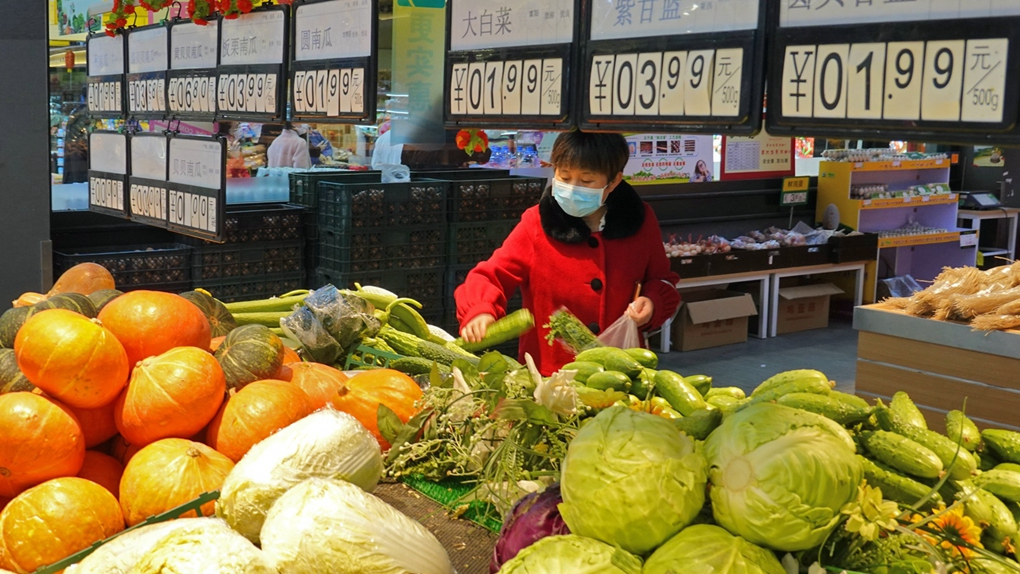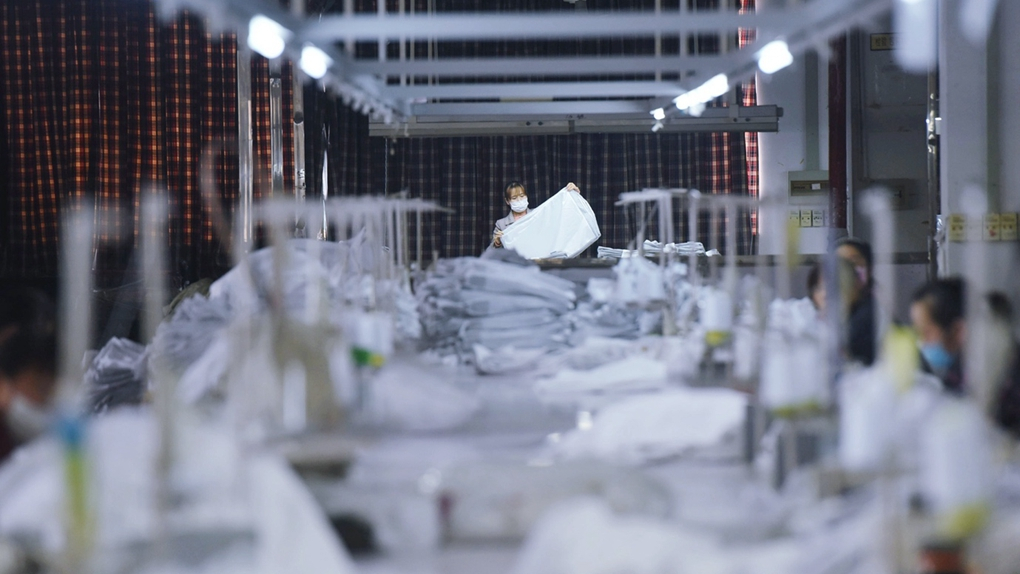
Lujiazui Finance and Trade Zone, Pudong District, Shanghai, China /VCG
Lujiazui Finance and Trade Zone, Pudong District, Shanghai, China /VCG
Due to the spreading coronavirus pandemic, China's economy posted its first contraction in decades, contracting 6.8 percent year-on-year at 20.65 trillion yuan (about 2.91 trillion U.S. dollars) in the first quarter of 2020, data from China's National Bureau of Statistics (NBS) said on Friday.
The latest Reuters poll trimmed China's gross domestic product (GDP) growth forecast for Q1 from more than three percent to negative 6.5 percent, while Goldman Sachs forecast that the world's second largest economy is set to record a nine percent plunge.
"The overall economy is good, the 6.8-percent shrink does not break through the expected bottom line," Chen Fengying, a research fellow with the China Institutes of Contemporary International Relations told CGTN.
Economy heavily ravaged
China's economy has been ravaged by the coronavirus outbreak. The primary, secondary, and tertiary sectors in Q1 all registered a decline in added value when compared to the same period in 2019, of 3.2 percent, 9.6 percent, and 5.2 percent, respectively.
The total value added of major industrial firms declined by 8.4 percent year-on-year in Q1, though the output of natural gas and non-woven fabrics secured a gain of 9.1 percent and 6.1 percent respectively in the same period.
Data from the NBS also showed that China's fixed-asset investment (FAI) descended 16.1 percent year-on-year to 8.41 trillion yuan in the first quarter, narrowing by 8.4 percentage points compared with the decrease in the first two months.
Investment in infrastructure, manufacturing, and real estate development in Q1 fell by 19.7 percent, 25.2 percent, and 7.7 percent respectively.

In the January-March period, national per capita disposable income dropped by 3.9 percent in real terms after deducting price factors to 8,561 yuan, with urban households posting a real decrease of 3.9 percent to 11,691 yuan and rural counterpart by 4.7 percent to 4,641 yuan.
As the outbreak of COVID-19 shut almost all public places down across China, people nationwide have hidden away in their homes since the end of January this year to avoid any possibility to contact with others and gradually switched to online activities.
Thus, the catering sector is more severely hit with its revenues in Q1 falling 44.3 percent compared with the same period last year, but online sales only saw a 0.8 percent year-on-year decrease. Online sales of physical goods expanded 5.9 percent to 1.85 trillion yuan, accounting for 23.6 percent of the total retail sales in Q1.
China's consumer price index (CPI), a main gauge of inflation, rose 4.9 percent year-on-year in Q1, with the core CPI, which excludes food and energy prices, ticking up 1.3 percent year-on-year.
The total import and export of goods during the same period were 6.57 trillion yuan, declining by 6.4 percent year-on-year, with exports down 11.4 percent and imports down 0.7 percent.
V-shaped rebound
Despite the domestic economy contracting and the worse international situation, China has seen a V-shaped rebound in economic performance, especially in March, and the economic fundamentals are still positive, according to Chen.
Data from the NBS showed that FAI in March was up 6.05 percent from February. And, investment in e-commerce services in Q1 increased by 39.6 percent. In the health sector this fell only by 0.9 percent, 15.2 percentage points lower than the total investment.
China's job market also improved slightly in March, with the surveyed unemployment rate in urban areas standing at 5.9 percent, 0.3 percentage points down from the previous month.

Consumers buy vegetables in a supermarket in Yantai, Shandong, China on March 10, 2020. /VCG
Consumers buy vegetables in a supermarket in Yantai, Shandong, China on March 10, 2020. /VCG
Meanwhile, in the first three months, the country's total retail sales of consumer goods, a major indicator of consumption growth, in Q1 tumbled by 19 percent from a year ago at 7.86 trillion yuan, slightly rebounding from a drop of 20.5 percent in the first two months, while the sales in March fell by 15.8 percent, 4.7 percentage points narrower than that in January-February period.
China's high-tech manufacturing in Q1 increased by 8.9 percent year-on-year. Also, the operating income of Internet and related services grew by 10.1 percent, and online sales of goods reached over 1,800 billion yuan with an increase of 5.9 percent, according to NBS data.
"A series of economic data shows that the Chinese economy has transformed to high-quality development. There have been still online sales and online payments, which have saved our economy during the time when we were staying at home," Chen told CGTN.
"The epidemic control is a key condition for the resumption of production, and China is now the only country in the world that has this condition. It is expected that April and May will see better performance," she added.
Uncertainties still exist
"There is no need to worry about investment, and foreign capital will come into China, for Chinese people are beginning consumption," said Chen, stressing that the most uncertain factor in the second half of the year is international trade.
"The impact of trade on China's employment is still very large... Trade cannot be guaranteed if the pandemic cannot be controlled well in the world. So we cannot be happy now," Chen told CGTN.

Migrant workers produce home textile supplies in a workshop in Hangzhou, China, April 17, 2020. /VCG
Migrant workers produce home textile supplies in a workshop in Hangzhou, China, April 17, 2020. /VCG
"But now, it is not just a problem in China, but also a problem in the world. China's V-shaped rebound would have been stronger if the international situation of the pandemic had not deteriorated. We have to control imported cases to ensure a strong rebound," Chen told CGTN.
"Another big problem is how to solve the problem of poverty. As many orders have been canceled [in factories] in coastal cities, migrant workers [in those factories] may lose their jobs and they would become poor. The goal of overall poverty reduction is more worrying. Training and re-employment are what we need to care about," Chen said.
China's annual growth target, which used to be released in March at the National People's Congress, has not been officially published as the annual meeting was postponed due to the coronavirus outbreak.
"The annual economic growth is sure to maintain moderate positive growth," Chen told CGTN, adding that, "China has seen a V-shaped rebound. We should look at the month-to-month growth rather than the year-on-year growth."